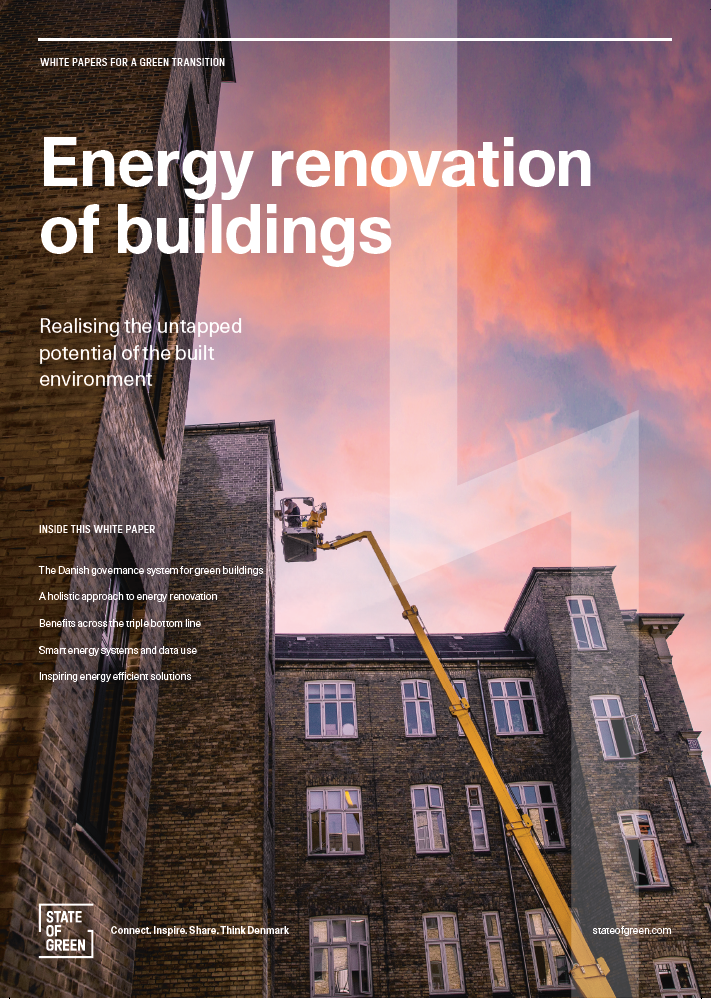Download our publication on energy renovation of buildings today
This article is part of our publication ‘Energy renovation of buildings’.
Download nowPerspective
Buildings
Energy efficiency in buildings


Energy performance certificates or Energy Labelling has been used in the Danish building sector since 2006. About half of the building stock in Denmark has an EPC. The certificate assigns an energy rating on a scale ranging from A (high energy efficiency) to G (poor energy efficiency) and lists
cost-effective measures for improving the energy performance of the building and the savings potential related to the measures.
In 2021, the layout of the Energy Labelling Report was redesigned to make it easier to understand for the house owners. At the same time, a new funding scheme was introduced, making it a requirement to have an EPC in order to receivefunding. This has resulted in a steep increase in the number
of EPC produced annually; in 2020 approximately 68,000 energy labels were issued, and that number rose to roughly 81,000 in 2021.

This article is part of our publication ‘Energy renovation of buildings’.
Download nowThe responsibility for implementing the EPC lies with the Danish Energy Agency (DEA), including the daily operations, supervision, quality assurance and future development of the scheme. All EPCs are registered in a central database administered by the DEA and are displayed on its public website www.sparenergi.dk. The EPC of single-family houses constructed less than 25 years ago can take place without an on-site visit to the building. For public buildings, office buildings and buildings used for administration, the EPC must be based on the calculated energy consumption. The validity of an EPC is 10 years.
All public buildings with more than 250 m2 of useable floor area are required to have a valid EPC, which must be displayed publicly. All the certificate’s other key information is made available to the public through the central web-based information server www.boligejer.dk and on the site www.sparenergi.dk.
The DEA has conducted a study on the relationship between house prices and an EPC’s rating. One of the key results was that the EPC rating has a clear and significant influence on the house price and the buyer’s willingness to pay a higher price for a higher energy rating. For example, in the case of a 100 m2 house with a C-label rating compared to a D-label rating house, it was found that it capitalised into a willingness for the house owner to pay a premium of EUR 6,000 for the higher rated house.
solutions
Energy efficiency in buildings
+2
events
Urban planning and development
+7